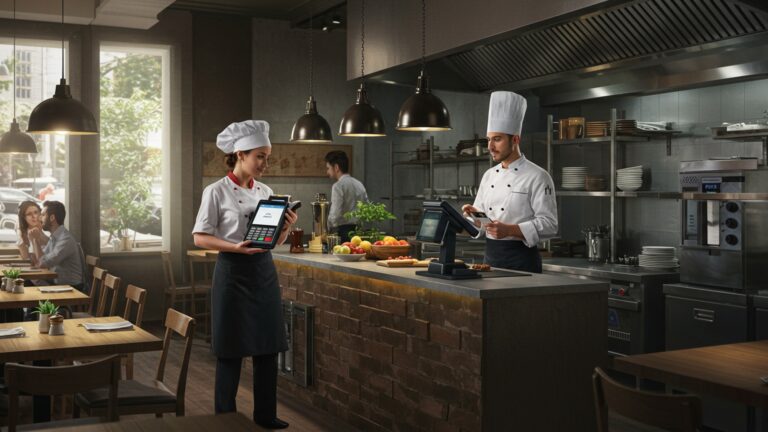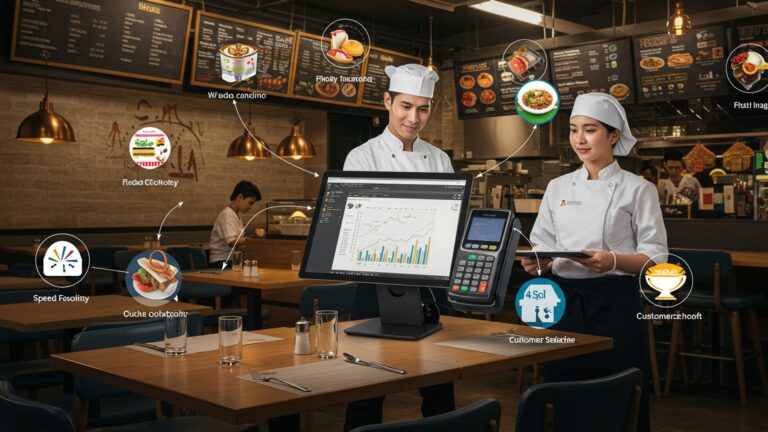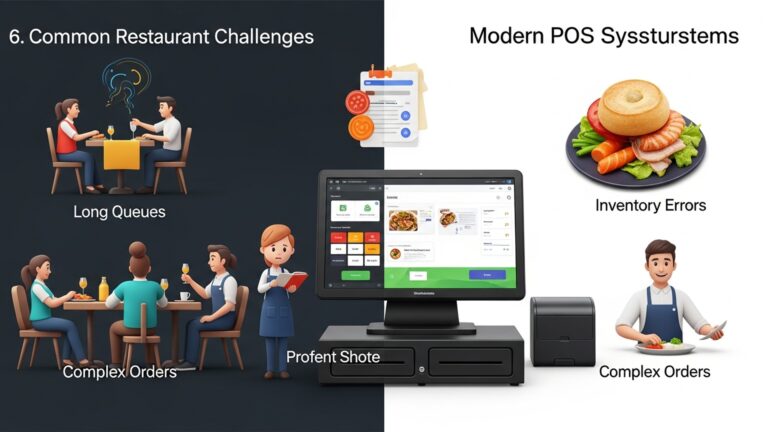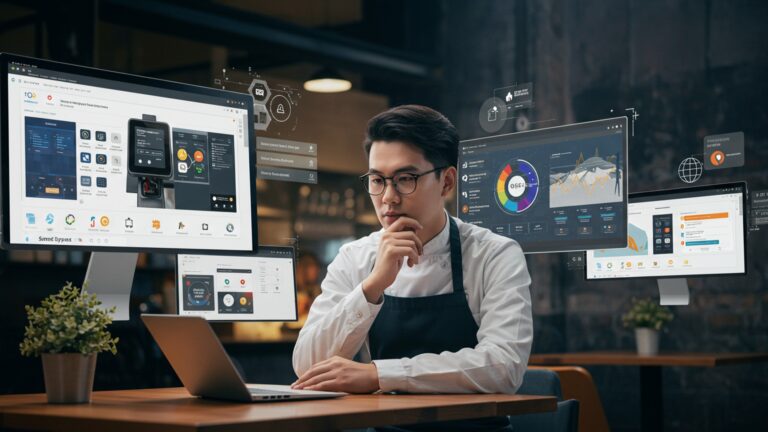How to Master Restaurant Table Management Using Your POS System for Efficiency
The chaotic dance of a busy dining room, from managing unexpected walk-ins to optimizing table turns, often dictates a restaurant’s profitability and guest satisfaction. In today’s hyper-competitive culinary landscape, where diners expect instant gratification and seamless experiences, relying on outdated manual systems is a direct path to missed opportunities and frustrated guests. Modern restaurant operations demand precision. this is where a sophisticated restaurant POS with table management capabilities becomes indispensable. It transforms a static floor plan into a dynamic, data-rich command center, enabling real-time seating decisions, reducing wait times. preventing revenue loss from empty tables by intelligently orchestrating every front-of-house movement.
Understanding the Foundation: What is Restaurant Table Management?
In the bustling world of hospitality, efficient restaurant table management is the silent orchestrator behind a seamless dining experience. At its core, it’s the strategic process of organizing and allocating tables to guests in a way that maximizes restaurant capacity, minimizes wait times. optimizes server workflow. Historically, this was a manual affair, relying on pen-and-paper reservation books, laminated floor plans. a maître d’s keen memory. While effective in simpler times, this approach was prone to human error, bottlenecks. a lack of real-time visibility, often leading to frustrated guests and overwhelmed staff during peak hours.
The transition from analog to digital has revolutionized this critical operational aspect. Modern table management, powered by technology, moves beyond mere seating arrangements. It encompasses the entire guest journey from initial reservation or walk-in, through seating, service. departure. The goal is not just to fill seats. to manage the flow of diners, predict turnover. ensure that every table is utilized to its fullest potential without compromising the guest experience. This proactive approach significantly impacts a restaurant’s profitability and reputation.
The Central Hub: Your Restaurant POS System
At the heart of any modern restaurant operation lies the Point of Sale (POS) system. Far more than just a cash register, today’s POS acts as the central nervous system of a restaurant, integrating everything from order taking and payment processing to inventory management, staff scheduling, and, crucially, table management. A robust restaurant POS with table management system transforms a disparate collection of tasks into a cohesive, streamlined workflow.
Before the advent of integrated systems, restaurants often relied on separate software for reservations, waitlists. order entry. This created data silos, requiring staff to switch between multiple applications, increasing the likelihood of errors and slowing down service. A unified restaurant POS with table management solution consolidates these functions, providing a single, intuitive interface for all front-of-house operations. This integration means that when a server marks a table as paid in the POS, the table management module immediately updates its status, signaling that it’s ready for cleaning and the next guests. This real-time data flow is what truly distinguishes modern table management and drives significant efficiency gains.
Core Features of Advanced Table Management within a POS
Modern restaurant POS with table management systems come packed with features designed to elevate operational efficiency and guest satisfaction. Understanding these components is key to leveraging your system to its full potential:
- Interactive Floor Plans
- Reservation and Waitlist Integration
- Real-time Table Status Updates
- Server Assignment and Rotation
- Customer Flow Optimization
- Guest Profiles and Preferences
- Analytics and Reporting
This is perhaps the most visual and impactful feature. A digital, customizable representation of your restaurant’s layout allows hosts to see the status of every table at a glance. Tables can be color-coded (e. g. , green for vacant, red for occupied, yellow for service needed, blue for paid/cleaning), providing immediate, actionable data.
Seamlessly manage incoming reservations and walk-in waitlists directly from the POS. The system can automatically suggest available tables based on party size and preferred seating areas, reducing manual errors and optimizing seating. Guests can receive automated text messages when their table is ready, enhancing convenience and reducing congestion at the host stand.
As orders are placed, courses are served. payments are processed, the POS updates the table’s status in real-time. This provides front-of-house staff with an accurate overview of dining progression, helping them anticipate table availability and manage guest expectations.
Assign tables or sections to specific servers, ensuring an equitable distribution of workload and preventing server burnout. The system can track server performance and tips, facilitating fair rotation and optimizing service quality.
Advanced algorithms can predict table turnover rates based on historical data, helping hosts make informed decisions about seating new guests. This minimizes empty tables during busy periods and prevents over-seating, which can overwhelm the kitchen and service staff.
Store valuable customer data, including dietary restrictions, favorite dishes. past visit history. This allows staff to offer personalized service, enhancing the guest experience and fostering loyalty. For example, if a guest prefers a quiet corner, the system can flag this preference for future visits.
Generate detailed reports on table turnover, average dining times, server efficiency. peak hours. This data is invaluable for making strategic decisions about staffing, menu adjustments. operational improvements.
Optimizing Operations: Practical Strategies and Best Practices
Implementing a restaurant POS with table management system is only the first step; mastering it requires a commitment to best practices and continuous optimization.
- Initial Setup and Customization
- Accurate Floor Plan
- Table Status Definitions
- Comprehensive Staff Training
- Hands-on Practice
- Scenario-Based Training
- Continuous Refreshers
- Daily Operational Workflow
- Proactive Seating
- Communication is Key
- Managing Walk-ins vs. Reservations
- Handling Large Parties and Merged Tables
- Leveraging Data for Continuous Improvement
- Review Daily Reports
- Adjust Staffing
- Optimize Seating Strategies
Ensure your digital floor plan precisely mirrors your physical layout, including table numbers, seating capacities. distinct zones (e. g. , bar, patio, main dining). This minimizes confusion for new staff.
Clearly define and train staff on what each table status means (e. g. , “Dirty” vs. “Ready to be Wiped” vs. “Clean”). Consistency is key.
Conduct thorough training sessions with all front-of-house staff, including hosts, servers. managers. Emphasize hands-on practice in a simulated environment before live service.
Walk staff through various scenarios: managing a large walk-in party, handling a reservation that’s running late, marking a table as needing a clean-up.
Technology evolves. so do processes. Schedule regular refreshers and share tips for maximizing system efficiency.
Encourage hosts to look several steps ahead. Instead of just seating the next party, consider where the next two or three parties will go to avoid blocking sections or overwhelming a single server.
Servers should communicate table status changes promptly through the POS (e. g. , marking an order as fired, closing out a check). This ensures the host stand has the most up-to-date details.
Develop a clear policy. The POS helps prioritize reservations while efficiently slotting in walk-ins based on real-time availability.
The system should allow for easy merging and splitting of tables, automatically adjusting capacity and server assignments.
Regularly assess table turnover, wait times. server performance reports. Identify bottlenecks and areas for improvement.
Use peak hour data to optimize staffing levels, ensuring adequate coverage during busy periods and reducing unnecessary labor costs during slower times.
If certain table configurations consistently show longer turnover times, consider experimenting with seating patterns or even minor layout adjustments.
Transforming Service: Real-World Benefits and a Case Study
The impact of a well-implemented restaurant POS with table management system extends far beyond mere efficiency; it fundamentally transforms the dining experience and operational profitability. Consider “The Urban Sprout,” a popular farm-to-table restaurant in a bustling city. Before adopting an integrated POS with robust table management, they struggled with consistently long wait times, even with empty tables visible. Their paper-based system led to:
- Disjointed Reservations
- Inefficient Table Turnover
- Uneven Server Load
Reservations were often double-booked or missed, leading to frustrated guests.
Servers weren’t consistently signaling when tables were ready for cleaning, causing delays.
Some servers were overwhelmed while others had downtime, impacting service quality and tips.
After investing in a comprehensive restaurant POS with table management system, The Urban Sprout saw dramatic improvements:
- Reduced Wait Times by 30%
- Increased Table Turnover by 15%
- Improved Server Efficiency and Tips
- Enhanced Customer Satisfaction
- Data-Driven Decisions
The interactive floor plan and real-time status updates allowed hosts to seat guests more quickly and accurately, even during peak hours.
Servers used the POS to immediately update table status (e. g. , “Paid, Ready to Clean”), prompting bussers and hosts to act faster. This meant more guests could be served throughout the evening.
The system’s ability to balance server sections led to more equitable workloads, reducing stress and allowing servers to provide better service, which, in turn, boosted their tips.
Guests appreciated the streamlined experience, shorter waits. personalized service, leading to higher online ratings and repeat business.
Management used the analytics to identify their busiest hours, allowing them to optimize staffing and even adjust menu items to improve kitchen speed.
This anecdote illustrates that mastering your restaurant POS with table management isn’t just about adopting new technology; it’s about embracing a smarter way to run your business, leading to a more pleasant experience for both staff and guests. ultimately, a healthier bottom line.
Selecting the Right Restaurant POS with Table Management System
Choosing the ideal restaurant POS with table management system is a critical decision that can significantly impact your restaurant’s future success. It’s not a one-size-fits-all solution. careful consideration of several factors is essential.
Key factors to consider include:
- Scalability
- Ease of Use
- Integration Capabilities
- Customer Support
- Cost
- Customization
Does the system grow with your business? Can it handle multiple locations, or adapt if you expand your dining areas?
An intuitive interface is paramount for quick staff adoption and minimal training time. A complex system, no matter how feature-rich, will lead to frustration and errors.
Beyond table management, how well does it integrate with other essential restaurant operations like inventory, payroll, online ordering. loyalty programs? A truly unified system is more valuable.
What kind of support does the vendor offer? 24/7 availability, responsiveness. knowledgeable technicians are crucial, especially during peak operational hours.
Evaluate not just the upfront cost. also monthly subscription fees, hardware costs. any additional charges for features or support.
Can you easily customize floor plans, table numbers. operational workflows to match your specific restaurant’s needs?
To help illustrate the differences, here’s a comparison of what you might find in a basic versus an advanced restaurant POS with table management system:
| Feature Category | Basic Table Management POS | Advanced Table Management POS |
|---|---|---|
| Floor Plan | Static, simple graphical layout; manual updates. | Interactive, customizable digital floor plan; color-coded real-time status updates. |
| Reservations | Basic booking functionality; often separate module; manual input. | Integrated reservation system; online booking portal; automated confirmations/reminders. |
| Waitlist | Simple list; manual guest paging. | Automated waitlist with SMS notifications; estimated wait times; intelligent seating suggestions. |
| Table Status | Manual status changes; limited options (e. g. , occupied, vacant). | Real-time, automated status updates (e. g. , occupied, ordered, served, paid, dirty, clean); server-initiated updates. |
| Server Management | Manual table assignment; limited overview of server sections. | Automated server rotation; performance tracking; balanced section assignment. |
| Guest Data | Minimal or no guest profile storage. | Comprehensive guest profiles (preferences, history, dietary notes); VIP tagging. |
| Analytics | Basic sales reports; limited operational data. | Detailed reports on table turnover, average dining times, peak hours, server efficiency. |
| Integration | May integrate with basic POS functions. | Seamless integration with inventory, online ordering, loyalty, kitchen display systems (KDS). |
Navigating Challenges and Embracing the Future
While the benefits of a sophisticated restaurant POS with table management are clear, implementing any new technology can come with its own set of challenges. The most common hurdles include:
- Staff Resistance to Change
- Initial Setup Complexity
- Technical Glitches
Employees accustomed to older methods may be reluctant to adopt new systems.
Customizing floor plans and configuring settings can be time-consuming.
Like any software, occasional bugs or connectivity issues can disrupt service.
To overcome these, focus on comprehensive training, clearly communicate the benefits to staff (e. g. , easier workflow, better tips). ensure robust IT support during the transition period. Start with a phased rollout if necessary. gather feedback from staff to make continuous improvements.
Looking ahead, the future of restaurant POS with table management promises even greater innovation:
- AI-Driven Predictive Analytics
- Contactless Guest Journeys
- Enhanced Personalization
- Voice-Activated Controls
Systems will become even smarter, using AI to predict no-shows, optimize table assignments based on complex factors like kitchen load and server capacity. suggest optimal seating strategies in real-time.
From self-check-in kiosks for reservations to mobile ordering and payment directly from the table, technology will further empower guests while reducing friction for staff.
Deeper integration with CRM (Customer Relationship Management) tools will allow for hyper-personalized service, remembering not just preferences but also special occasions and past interactions.
Imagine a host asking their system, “Show me tables for four that will be ready in 10 minutes,” and getting an instant, accurate response.
Mastering your restaurant POS with table management system today means not just improving current operations. also positioning your establishment to thrive in an increasingly tech-driven hospitality landscape. Embrace the tools, train your team. watch your restaurant’s efficiency and guest satisfaction soar.
Conclusion
Embracing your POS system isn’t merely about managing transactions; it’s about transforming your restaurant’s operational core into a seamless, guest-centric machine. By leveraging its real-time data, you can dynamically assign tables, optimize server sections. drastically reduce wait times, turning tables efficiently even during the busiest Saturday dinner rushes. A personal tip: make it a habit to examine your POS reports weekly. This isn’t just about sales; it reveals invaluable patterns in guest flow and table turnover, allowing you to proactively adjust your floor plan or staffing, a trend increasingly discussed in hospitality tech forums. Don’t just use your POS; master it. This powerful tool, as detailed by industry analyses on restaurant technology, is the silent conductor of your front-of-house, promising not just unparalleled efficiency. a superior dining experience and a healthier bottom line for your establishment.
More Articles
How to Optimize Your Restaurant’s Inventory with POS Integration
Boosting Server Performance: Training Tips for POS Systems
The Future of Restaurant Technology: AI and Automation in Dining
Enhancing Guest Experience Through Digital Ordering and Table Management
Choosing the Right POS System for Your Restaurant: A Comprehensive Guide
FAQs
Why should I bother using my POS system for table management?
It’s a game-changer for efficiency! Your POS gives you a real-time birds-eye view of your dining room. You can see which tables are open, occupied, or about to finish. This helps hosts seat guests faster, prevents double-booking. gives your servers a heads-up on new tables. , less guesswork and more smooth operations.
How can my POS actually help seat guests quicker?
Think of your POS as a smart, digital floor plan. It visually shows you which tables are clean and ready, which ones have just ordered dessert. which ones are almost done. This means your host can instantly pick the best available table for new arrivals without running around or constantly checking with servers. No more ‘just a minute while I check!’
My servers always seem overwhelmed. Can the POS help balance their workload?
Absolutely! A good POS lets you assign tables to specific servers and clearly see their current load. If one server has too many tables, you can easily shift new guests to another who’s less busy. This prevents burnout, ensures better service for everyone. keeps your team happier and more productive.
What about managing waitlists? Is that part of using my POS for tables?
Yes, many modern POS systems include integrated waitlist features. You can easily add guests, provide estimated wait times. even send SMS notifications when their table is ready. It’s far more organized and professional than shouting names or using old-school paper lists, especially during peak hours.
Can my POS help me interpret peak times or how long guests typically stay?
Definitely! Your POS tracks table turn times and guest flow throughout the day. By analyzing this data, you can easily spot your busiest hours, figure out average dining durations. make smarter decisions about staffing levels, reservation strategies. even menu design. It’s like having a data-driven crystal ball for your restaurant’s operations.
What if a table needs to be combined or split for a large party? Can the POS handle that easily?
Most modern POS systems are designed with this flexibility in mind. You can typically drag and drop to virtually combine tables for a large group, making it easy to manage their orders and seating. Similarly, splitting a single table’s bill among multiple parties is usually a straightforward process, simplifying what used to be a complicated task for both hosts and servers.
Is it hard to train staff on using the POS for table management?
Usually not! The best systems are designed to be very intuitive with visual floor plans that mimic your actual restaurant layout. If your staff already uses the POS for taking orders, adding table management features is often just an extension of what they already know. A little training goes a long way. the benefits in efficiency quickly outweigh the initial learning curve.





